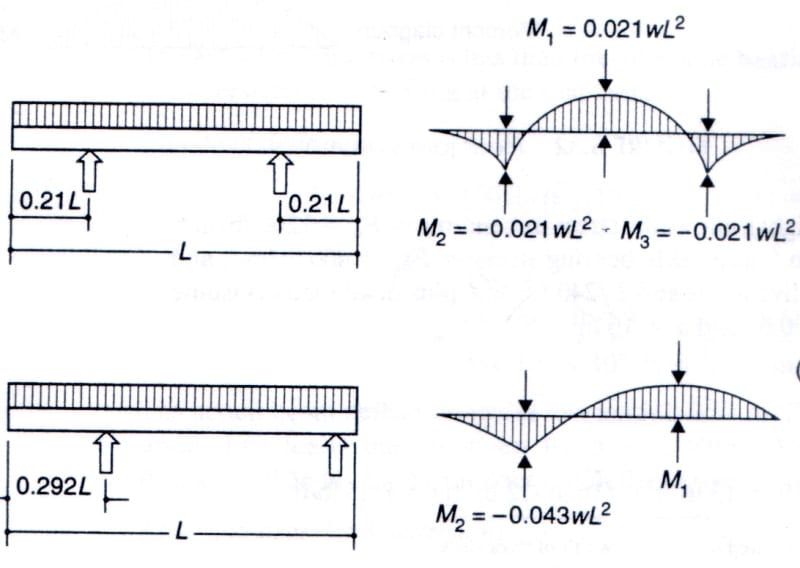Iasonasx;
You asked about deflections. In the case of the double cantilever beam, the deflection correction in the span due to M2 and M3 is M2(span)2/8EI.
Since span = L(1-2*0.21) = 0.58L, the reduction in central deflection due to M2 and M3 is 0.021wL2(0.58L)2/8 = 0.000883wL4/EI.
The simple span deflection of the span is 5w(0.58L)4/384EI = 0.001474wL4/EI.
So the net deflection in the central span is 0.001474wL4/EI - 0.000883wL4/EI = 0.000590wL4/EI or approximately 40% of the simple span deflection.
The slope at each support, theta = w(0.58L)2/8EI * 0.58L/3 - 0.021wL2*/EI * 0.58L/2 = 0.00813wL3/EI - 0.00609wL3/EI = 0.00204wL3/EI.
The cantilever deflection is reduced by theta*0.21L = 0.000428wL4/EI as a result of the slope, theta.
Deflection at free end = w(0.21L)4/8EI = 0.0002434/EI - 0.000428wL4/EI = -0.000185wL4/EI, so maximum deflection of each cantilever = -0.000185wL4/EI (upward).
Unless I have made an arithmetic mistake, which is quite possible, the end of each cantilever deflects upward, so the maximum deflection occurs at midspan.
BA


